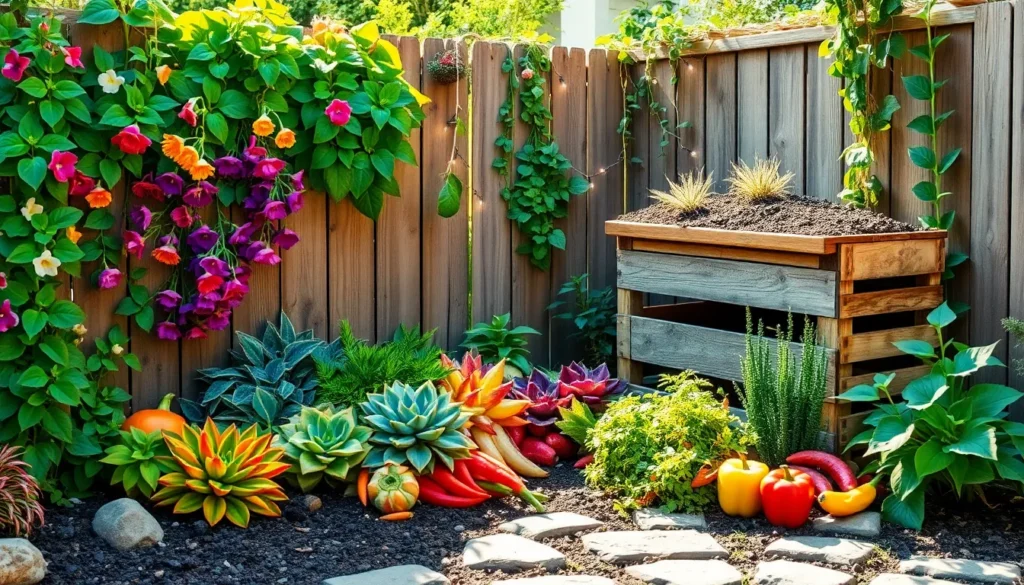Gardening is a journey filled with discovery, creativity, and the simple joys of nurturing life. Whether you’re a seasoned horticulturist or just beginning to till your first patch of earth, the beauty of organic gardening lies in its vibrant potential to transform spaces and enrich lives. This article invites you to explore a dozen innovative hacks designed to infuse your garden with a kaleidoscope of colors, all while keeping it environmentally friendly and sustainable. By the time you reach the last tip, you’ll be armed with practical, eye-catching solutions that breathe vivid life into your gardening projects.
In the world of organic gardening, every seed sown and every leaf unfurled is a testament to nature’s artistry. Our colorful hacks are crafted to inspire and guide both novices and experts in creating gardens that are not only lush and lively but also ecologically sound. From clever composting techniques to natural pest deterrents that double as visual wonders, these tips are as actionable as they are dazzling. As you delve into each hack, you’ll find that enhancing your garden’s palette doesn’t require synthetic shortcuts, but rather a little ingenuity and a lot of heart.
Curious about how to paint your garden with nature’s own brush? You’ll discover how to harness the power of companion planting to create a garden that’s a feast for the eyes and a haven for beneficial insects. Each hack is designed to be easily incorporated into your routine, offering vibrant rewards for your efforts. Let this be your guide to cultivating a garden that’s as colorful as it is kind to the planet, where every bloom and leaf is a stroke in nature’s grand masterpiece.
Plant Companion Flowers for Pests

Companion planting is a natural way to manage pests in your organic garden while adding beautiful blooms. By strategically placing certain flowers near your crops, you can deter unwanted insects and attract beneficial ones.
Consider planting marigolds, which are excellent for repelling nematodes and other harmful insects. These vibrant flowers thrive in well-drained soil and need full sun to bloom their best, making them perfect border companions for vegetable gardens.
Calendula, also known as pot marigold, not only adds cheerful color but also attracts pollinators and deters aphids. Plant calendula in rich, well-drained soil and ensure it gets at least six hours of sunlight daily to maximize its pest-repelling properties.
For a more advanced approach, try interplanting nasturtiums, which work as a trap crop for aphids, drawing them away from your vegetables. Nasturtiums prefer poor to average soil and need only moderate watering, making them low-maintenance additions to your garden arsenal.
Use Epsom Salt for Vivid Blooms
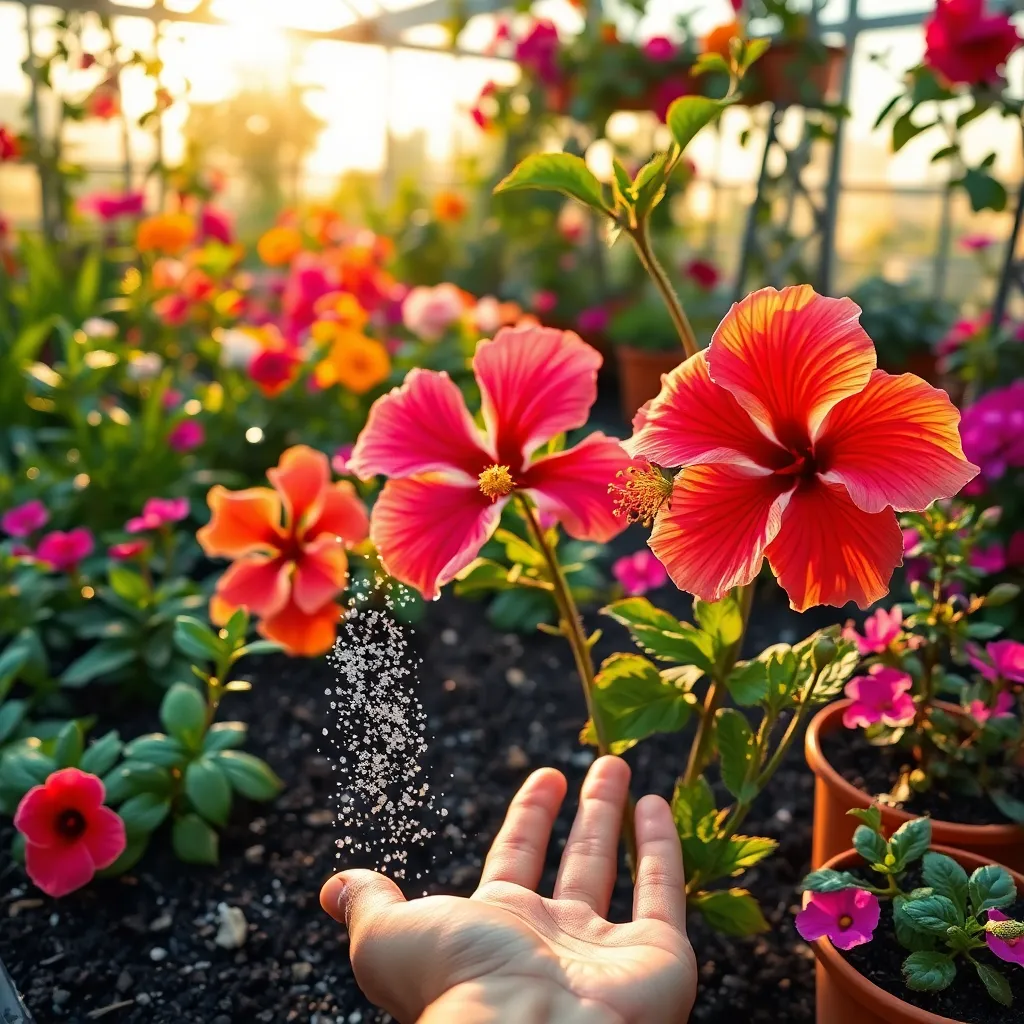
Transform your garden with the simple, yet effective use of epsom salt, a natural mineral compound. Known for its high magnesium content, epsom salt can enhance the vibrancy of your blooms.
Begin by dissolving epsom salt in water, using a ratio of one tablespoon per gallon. Apply this solution every two weeks during the growing season to boost your plant’s color and overall health.
For those with roses, sprinkle a tablespoon of epsom salt around the base of each plant at the start of the growing season. This encourages a robust bloom cycle by enhancing the plant’s nutrient uptake.
Experienced gardeners might consider testing their soil to determine magnesium levels before application. Overuse of epsom salt can lead to nutrient imbalances, so it’s important to use it as part of a comprehensive plant care strategy.
Add Coffee Grounds for Acidity
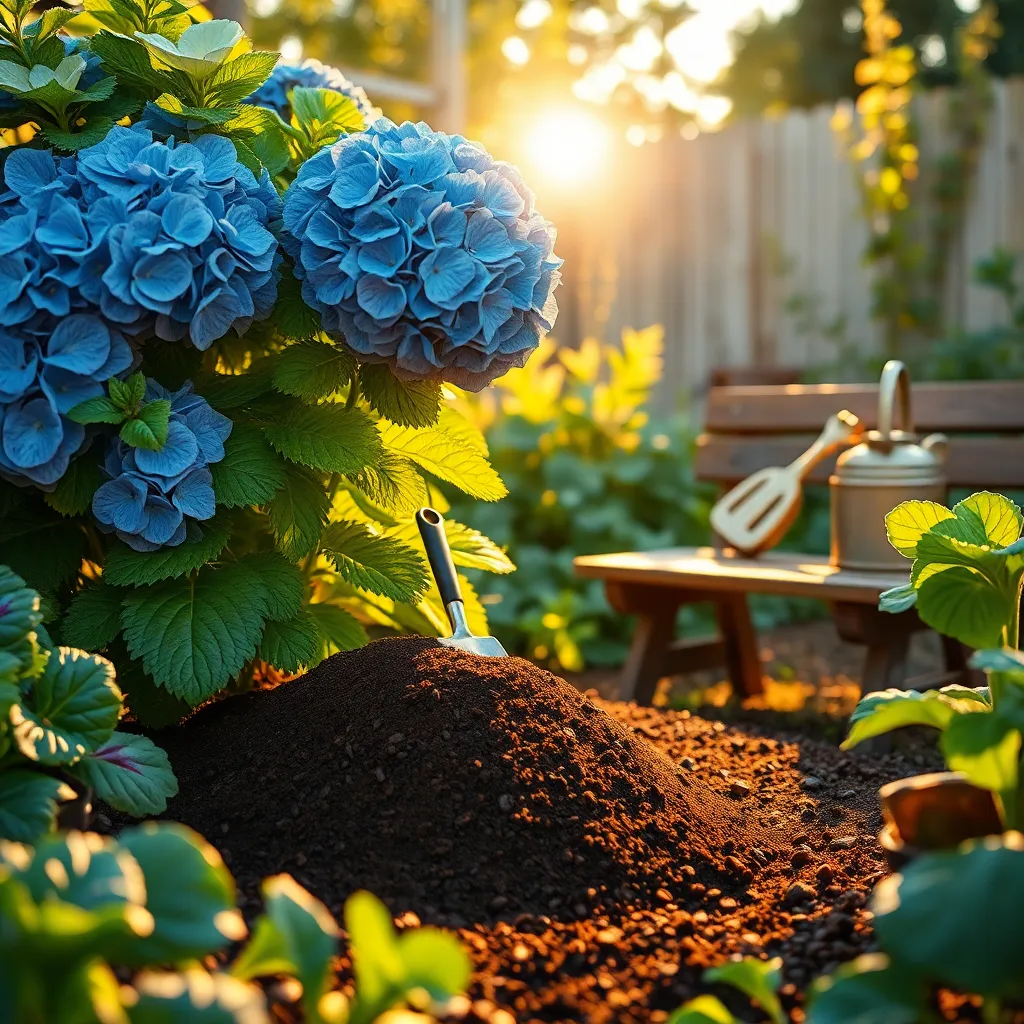
Adding coffee grounds to your garden can be a simple way to increase soil acidity, which is beneficial for acid-loving plants like blueberries, azaleas, and rhododendrons. Start by collecting used coffee grounds and allow them to dry before use, as wet grounds can clump together and make application uneven.
To incorporate coffee grounds, sprinkle a thin layer around the base of the plants, ensuring not to pile them up against stems or trunks, which can cause rot. The grounds not only enhance soil acidity but also provide a small boost of nitrogen, a vital nutrient for plant growth.
For those who enjoy a morning brew, this hack is both eco-friendly and convenient. Beginners should aim to apply coffee grounds sparingly, no more than once a month, to avoid overwhelming the soil.
Advanced gardeners might experiment with composting coffee grounds, which can further enrich their garden soil. Combine the grounds with other compost materials, such as shredded leaves and grass clippings, to balance the overall pH and nutrient profile.
Create Compost for Nutrient Boost
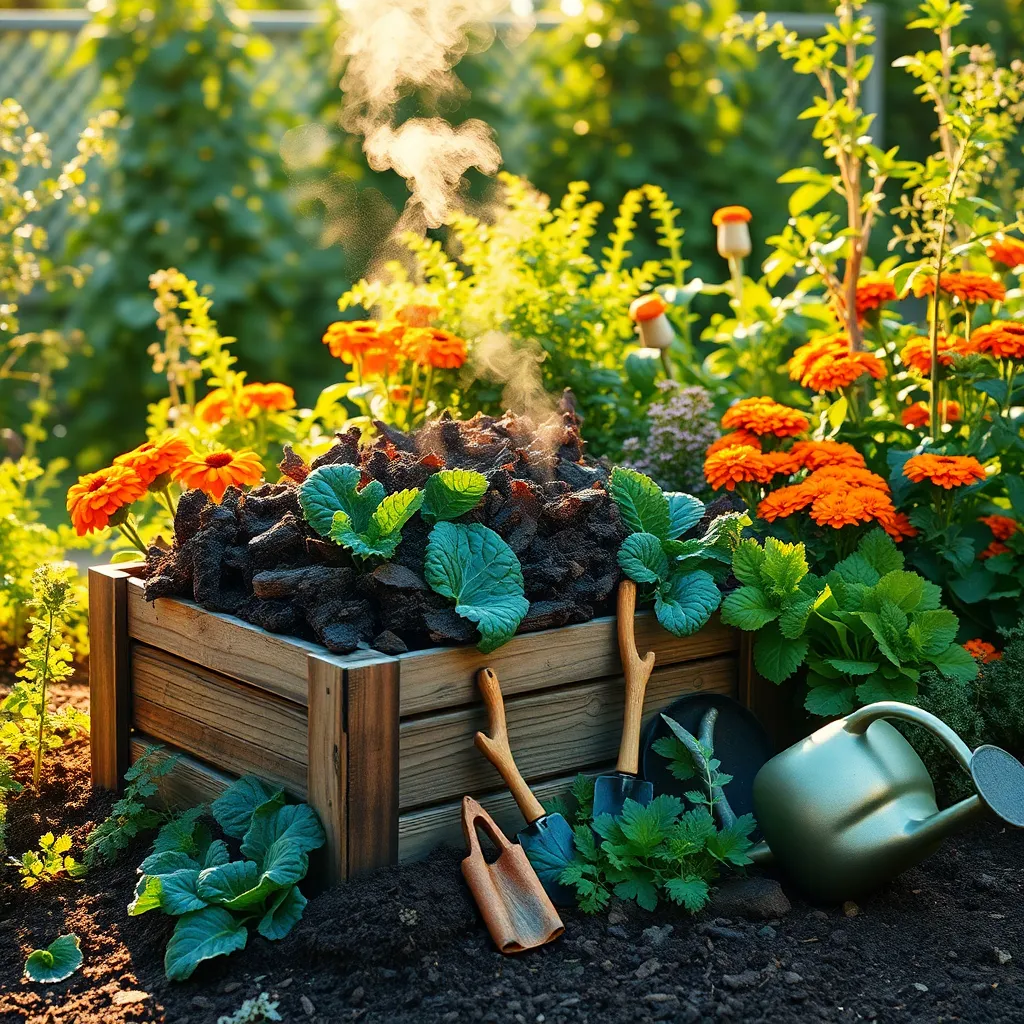
Creating your own compost is a fantastic way to give your garden a nutrient boost while reducing waste. Start by collecting organic materials like fruit peels, vegetable scraps, coffee grounds, and shredded newspaper in a compost bin or pile.
Layer these materials with garden soil or dried leaves to maintain a balanced mix of green and brown matter. This balance is crucial for the composting process, as it helps maintain the right moisture and aeration levels.
Turn your compost pile regularly to introduce oxygen and speed up decomposition. Aerating your compost every week or two will help reduce odors and produce rich, dark compost more quickly.
After a few months, your compost will transform into a crumbly, earthy material ready to enrich your garden soil. Use it as a top dressing for garden beds or mix it into the soil to improve its structure and nutrient content.
Apply Seaweed Spray for Growth
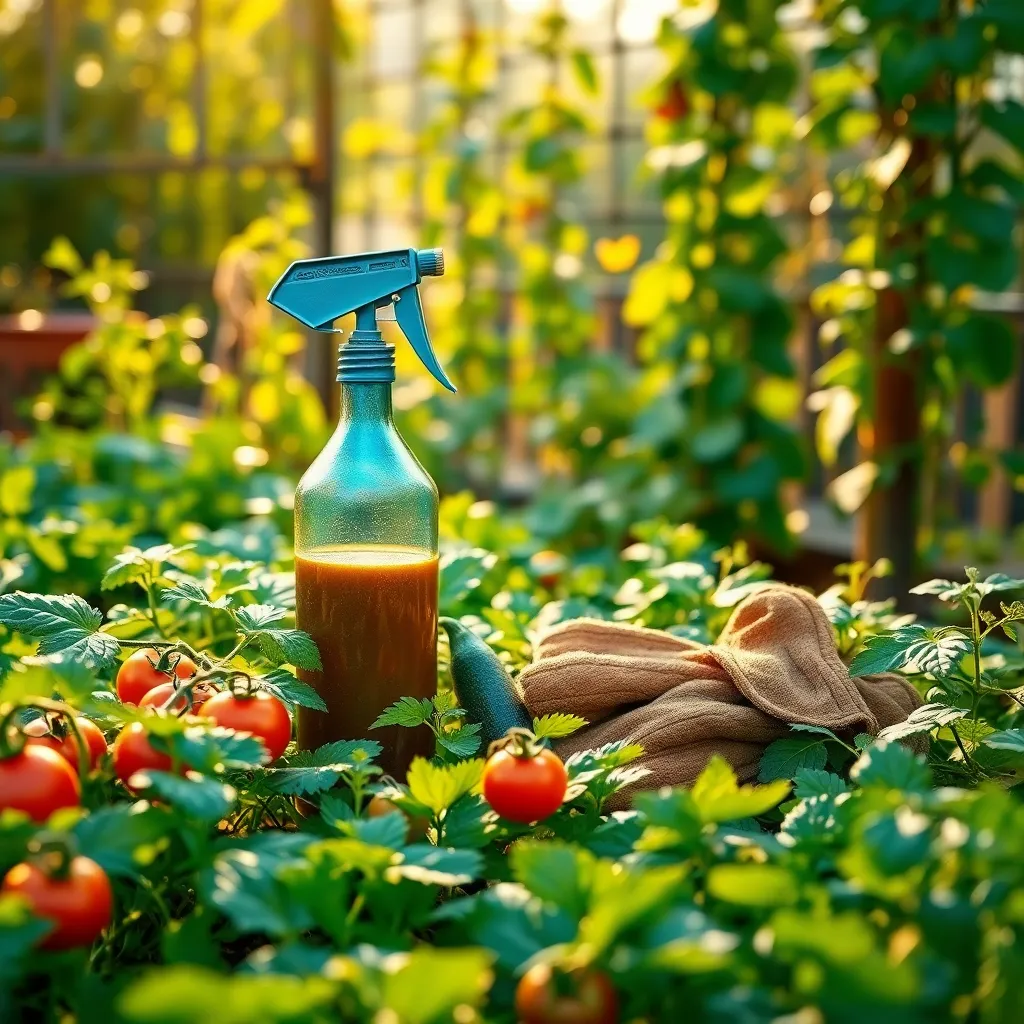
To harness the power of seaweed in your garden, start by preparing a seaweed spray. Seaweed is rich in essential nutrients like potassium and magnesium, which promote healthy plant growth and resilience.
Begin by collecting fresh seaweed or purchasing dried seaweed powder from a garden store. If using fresh seaweed, rinse it thoroughly to remove excess salt, then steep it in water for several days to create a nutrient-rich tea.
This seaweed tea can be diluted with water in a ratio of 1:4 before applying to your plants. Use a spray bottle to mist the leaves once every two weeks, focusing on the underside where nutrient absorption is most effective.
Applying seaweed spray not only boosts growth but also enhances disease resistance. For those with more experience, consider incorporating seaweed into your compost to enrich the overall nutrient profile of your soil.
Rotate Crops to Prevent Disease
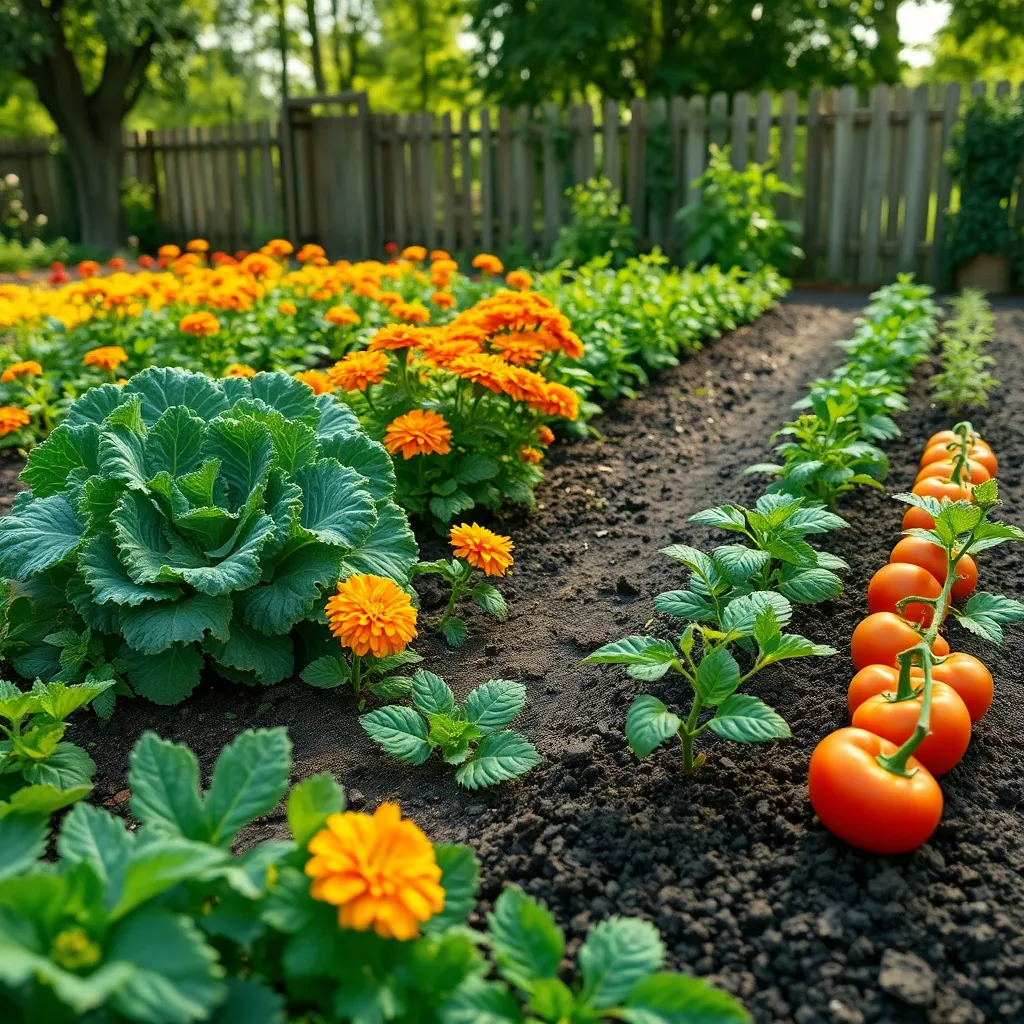
Rotating crops is a crucial practice in organic gardening that helps prevent soil-borne diseases and pests. By changing the location of your plants each season, you disrupt the life cycles of pathogens and pests, reducing their chance to thrive.
A simple crop rotation plan can be started by grouping plants into families, such as solanaceous (tomatoes, peppers), legumes (beans, peas), and brassicas (cabbage, broccoli). Each growing season, shift these groups to different sections of your garden, ensuring no family is planted in the same spot for at least three years.
For beginners, using a garden map or journal can be helpful to track plant locations over the years. Advanced gardeners might experiment with complex rotations, including cover crops, to further enrich their soil and break disease cycles.
Consider soil needs and nutrient requirements when rotating crops, as different plants deplete and replenish different nutrients. For instance, legumes can fix nitrogen in the soil, benefiting nitrogen-loving plants like corn when rotated after them.
Install Drip Irrigation for Efficiency

Drip irrigation is an efficient way to water your garden, minimizing water waste and ensuring plants get the moisture they need. This method delivers water directly to the plant roots, reducing evaporation and promoting healthier growth.
To install a basic drip irrigation system, start by planning the layout of your garden to determine where the hoses and emitters should go. Use a garden hose splitter to connect multiple lines, allowing you to control water flow to different sections of your garden.
Consider using a timer to automate your system, making it even more efficient by watering during the cooler parts of the day. This not only saves water but also helps prevent fungal diseases that can occur when foliage remains wet overnight.
For those with diverse plant types, adjust the emitters to provide varying water amounts to different plants based on their specific needs. For example, succulents need less water than leafy greens, so customize your setup accordingly.
Mulch with Straw to Retain Moisture

Mulching with straw is an excellent way to retain soil moisture and reduce the need for frequent watering. By creating a protective barrier, straw mulch helps to keep the soil temperature consistent, benefiting both the roots and the surrounding micro-ecosystem.
To apply straw mulch effectively, spread a 2-3 inch layer evenly around your plants, ensuring to leave a small gap around the stems to prevent rot. This technique not only conserves water but also suppresses weed growth, giving your plants a better chance to thrive.
For best results, use clean, weed-free straw, such as wheat or oat straw, which breaks down slowly and enriches the soil over time. As the straw decomposes, it adds organic matter to the soil, improving its structure and nutrient content.
While straw mulch is suitable for a wide range of plants, it is particularly beneficial for vegetables like tomatoes, peppers, and cucumbers, which prefer consistent moisture levels. Advanced gardeners can also experiment with adding a layer of newspaper beneath the straw for enhanced weed suppression and moisture retention.
Incorporate Marigolds to Repel Nematodes
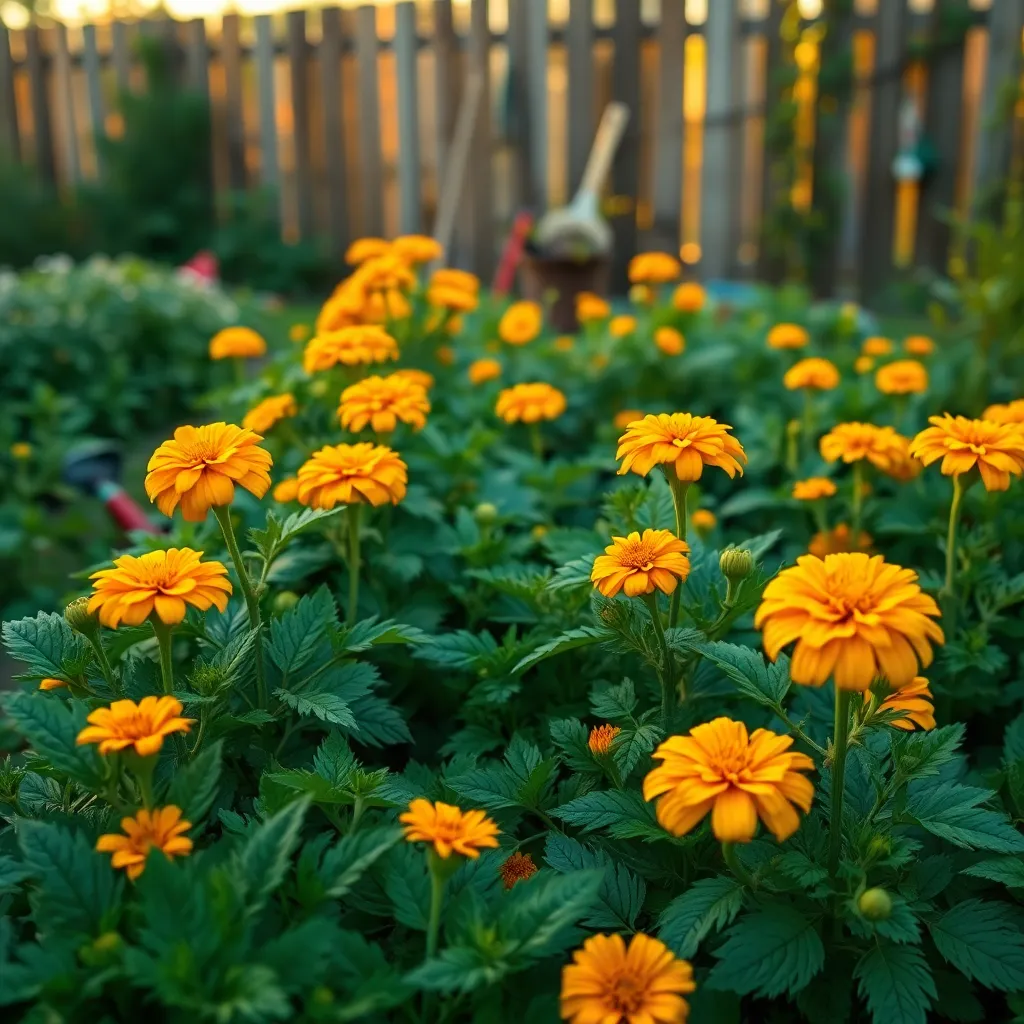
Marigolds are not just beautiful additions to your garden; they can also act as natural repellents for nematodes, which are microscopic pests that harm plant roots. To leverage this benefit, plant marigolds around the perimeter of garden beds or intersperse them among your vegetables to create a deterrent zone.
Choosing the right variety of marigold is essential, as not all types are equally effective at repelling nematodes. Opt for French marigolds (Tagetes patula), which are known for their nematode-repelling properties, and plant them densely for maximum effect.
To ensure healthy marigold growth, plant them in well-draining soil with a pH between 6.0 and 7.0, and provide them with full sun exposure. Water them moderately, allowing the soil to dry out between watering sessions to prevent root rot, and you’ll find them thriving and fulfilling their protective role.
For advanced gardeners, consider using marigolds as part of a crop rotation strategy. After harvesting your main crops, plant marigolds in those areas to naturally cleanse the soil of nematodes, preparing it for next season’s planting.
Use Eggshells for Calcium Addition
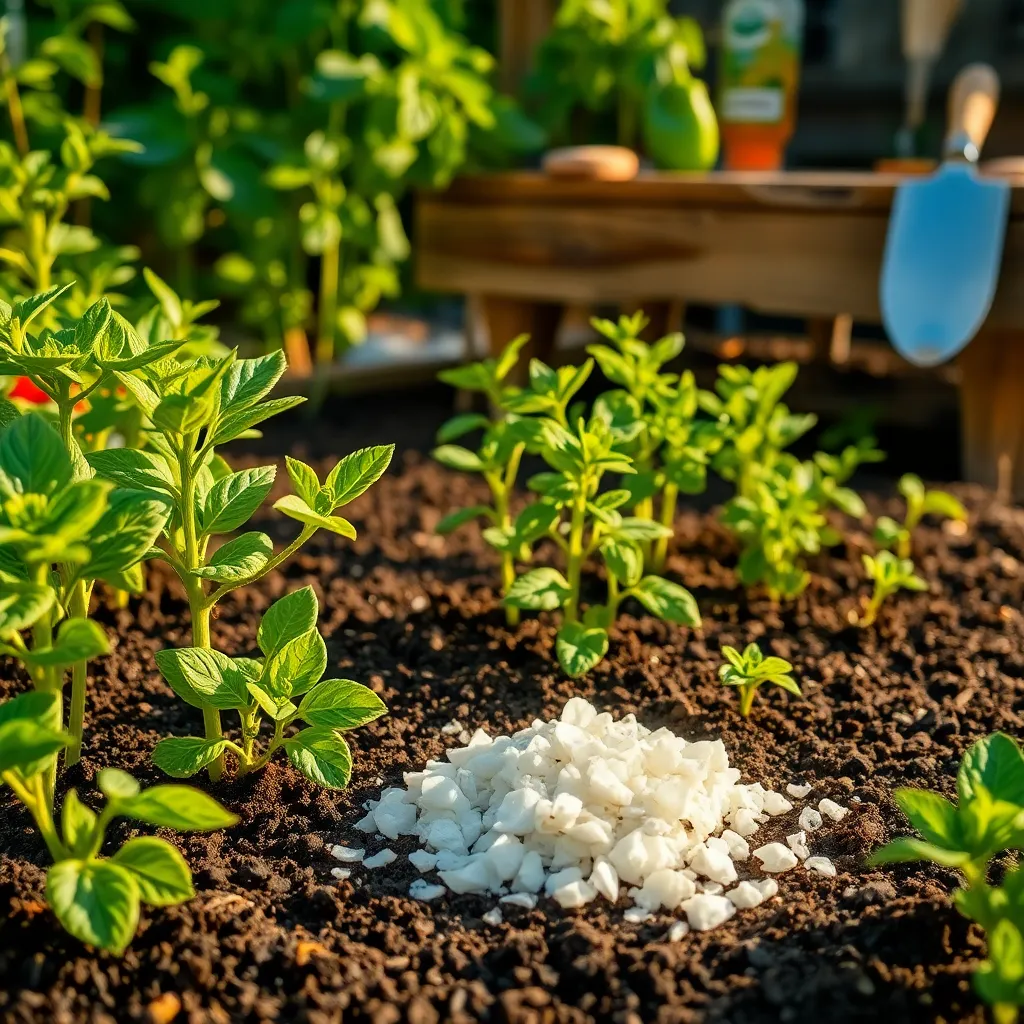
Eggshells are a fantastic source of calcium for your garden, and using them is a simple, effective way to enhance soil health. Begin by collecting eggshells from your kitchen, ensuring they are rinsed to remove any residual egg white.
Once cleaned, allow the shells to dry completely, which makes them easier to crush. Crush the eggshells into small pieces or grind them into a fine powder using a mortar and pestle or a coffee grinder.
Incorporate the crushed eggshells directly into the soil where you are planting calcium-loving vegetables like tomatoes, peppers, or eggplants. Calcium from the eggshells helps prevent blossom end rot, a common problem with these plants, by improving soil structure and promoting strong cell wall development.
For an advanced tip, create a liquid calcium supplement by soaking crushed eggshells in water for a few days. Use this calcium-rich water to water your plants, especially during their flowering and fruiting stages, to give them an extra boost.
Grow Cover Crops for Soil Health

Cultivating cover crops is a fantastic way to enhance soil health and boost your garden’s productivity. These plants, often referred to as “green manure,” improve soil structure, increase nutrient content, and help suppress weeds.
For beginners, start with easy-to-grow cover crops like clover or vetch. These crops fix nitrogen in the soil, providing an essential nutrient boost for future plantings.
Advanced gardeners might explore using buckwheat or field peas, which are excellent for breaking up compacted soil. Plant these crops in late summer or early fall to allow them time to grow before the onset of winter.
When it comes to incorporating cover crops, remember to cut them down before they set seed, and then till them into the soil. This practice enriches the soil with organic matter, enhancing its fertility and structure for the next planting season.
Plant Herbs to Attract Pollinators
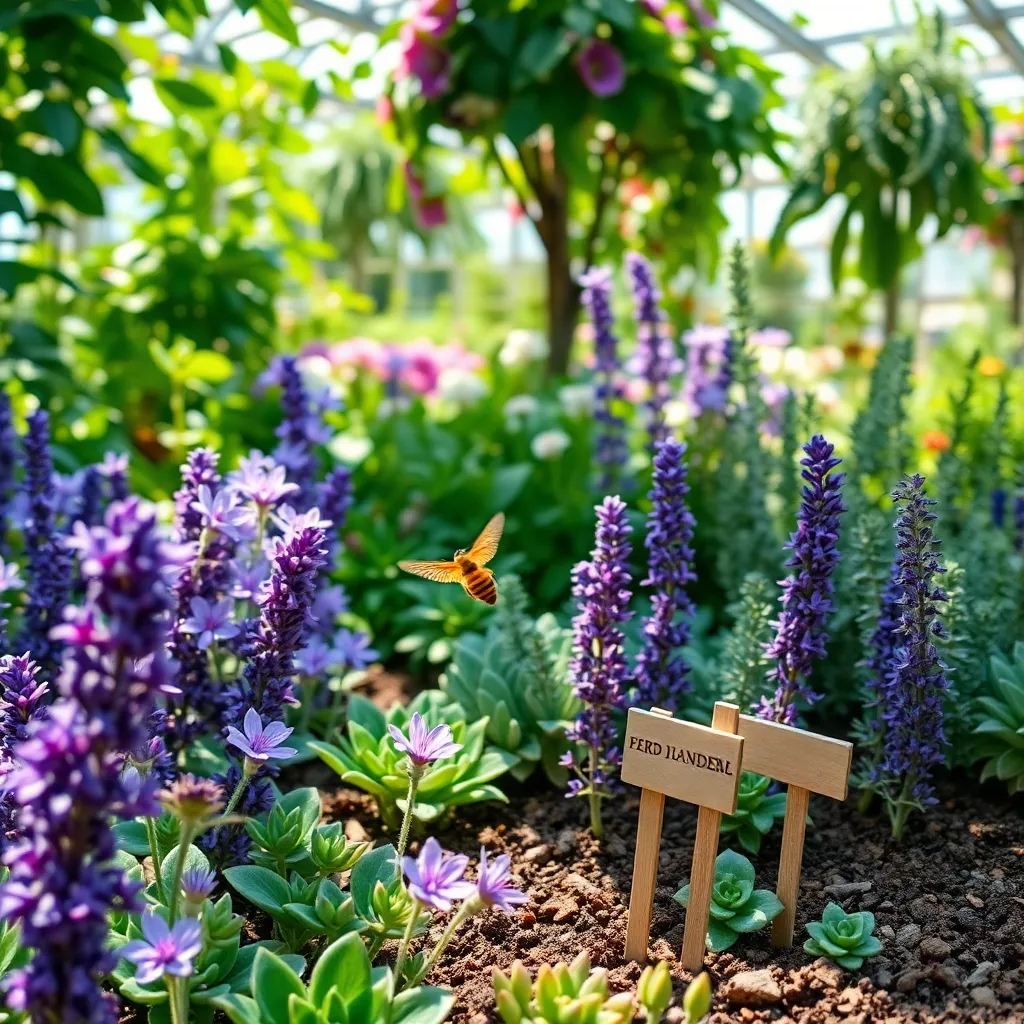
Planting herbs is a fantastic way to attract pollinators to your garden while adding flavor to your culinary creations. Flowers from herbs such as lavender, basil, and thyme provide essential nectar that draws bees, butterflies, and other beneficial insects.
Consider growing herbs in well-draining soil mixed with a bit of sand to enhance drainage, which most herbs prefer. Many herbs thrive in full sun, so choose a spot in your garden that receives at least six hours of sunlight daily for optimal growth.
Regular watering is crucial, but it’s important not to overwater; allow the top inch of soil to dry out between waterings to prevent root rot. For beginners, easy-to-grow herbs like mint and chives can offer immediate success and attract pollinators from early spring to late summer.
Advanced gardeners can experiment with companion planting, integrating herbs like dill and fennel alongside vegetables to improve pollination and deter pests. Be mindful of spacing; herbs should be planted about 12 to 18 inches apart to ensure they have room to grow and flourish.
Conclusion: Growing Success with These Plants
In exploring the vibrant world of organic gardening, we’ve uncovered 12 colorful hacks that mirror key relationship concepts: nurturing growth, embracing diversity, maintaining balance, fostering resilience, and cultivating patience. Just like a thriving garden, relationships flourish with attention and care. From understanding individual needs and promoting healthy communication to weathering storms together and celebrating differences, these hacks offer a blueprint for meaningful connections.
As you reflect on these concepts, take a moment to identify one area in your relationship that could benefit from a little extra attention. Whether it’s setting aside time to truly listen to your partner or embracing a new, shared activity, small, intentional changes can yield beautiful results.
Remember, relationships, much like gardens, are ever-evolving. Bookmark this article as a resource to revisit these principles, ensuring your relationship continues to bloom. By integrating these organic practices, you pave the way for a deeper, more resilient connection. Here’s to sowing the seeds of success and watching your relationships grow with love and vitality. Save this guide as your go-to for nurturing the connections that matter most.

